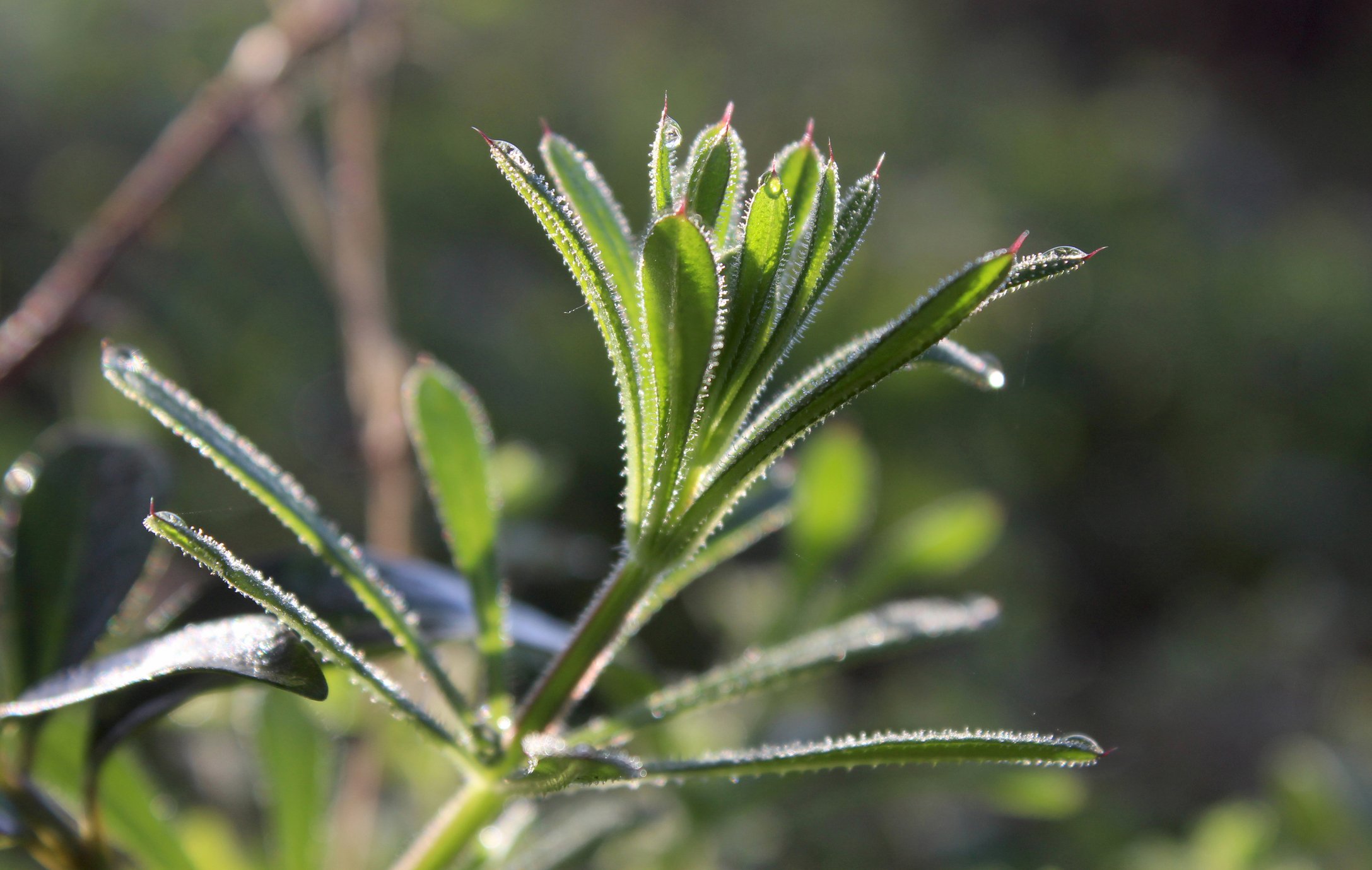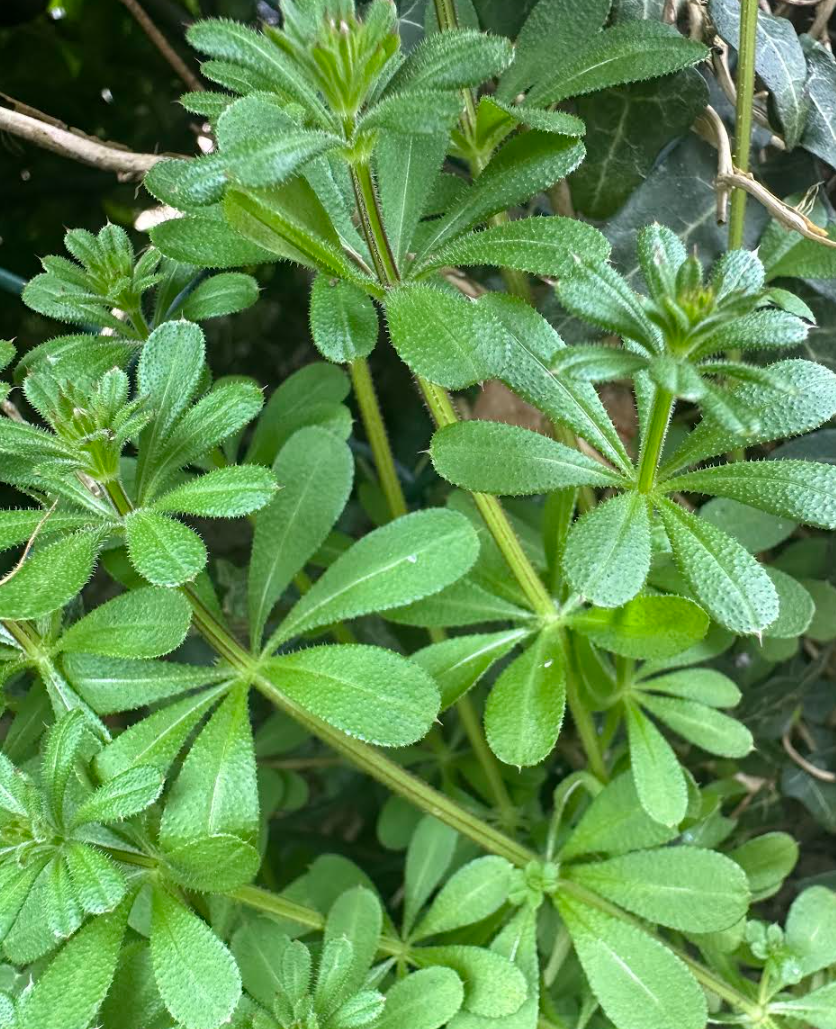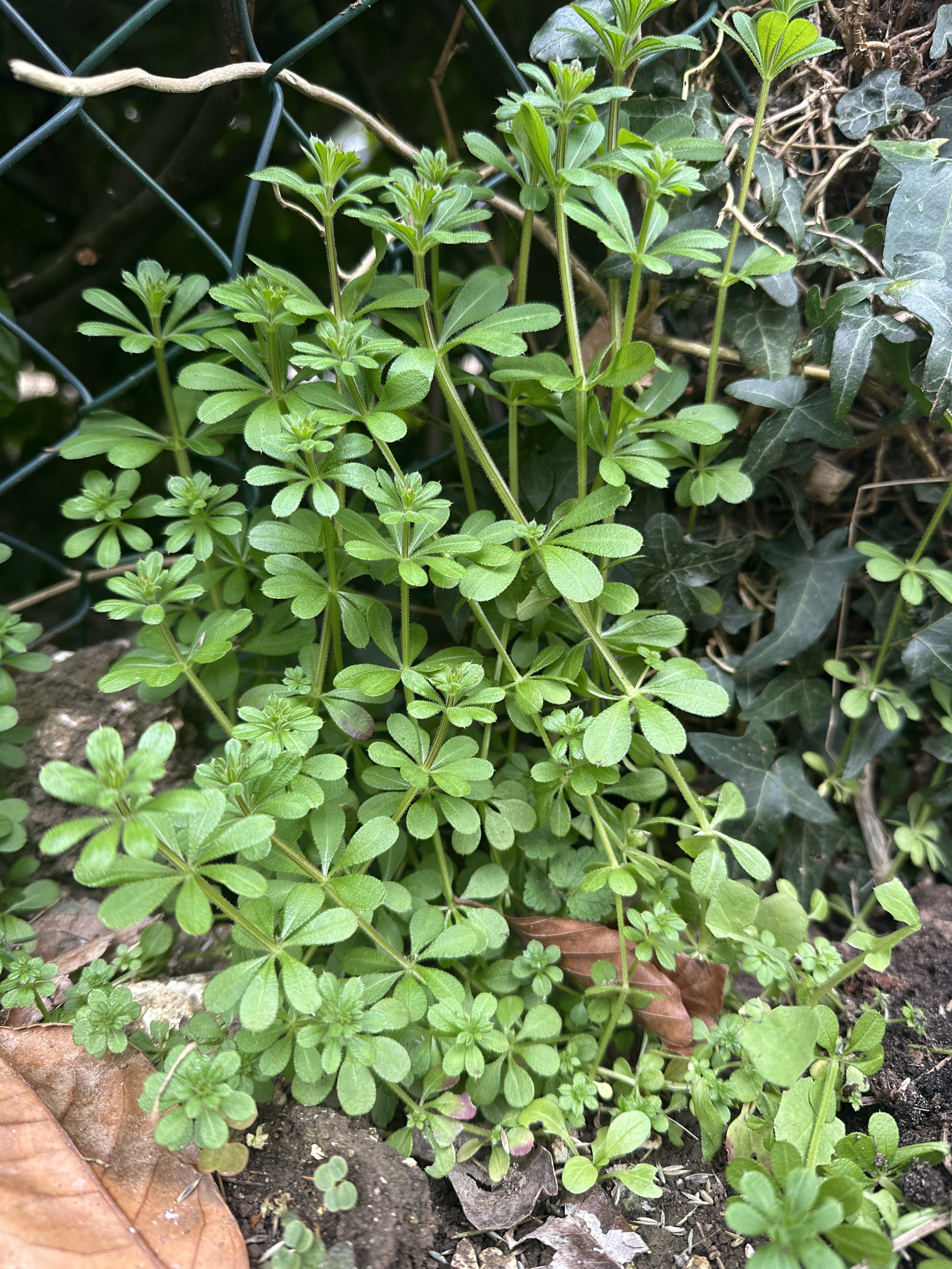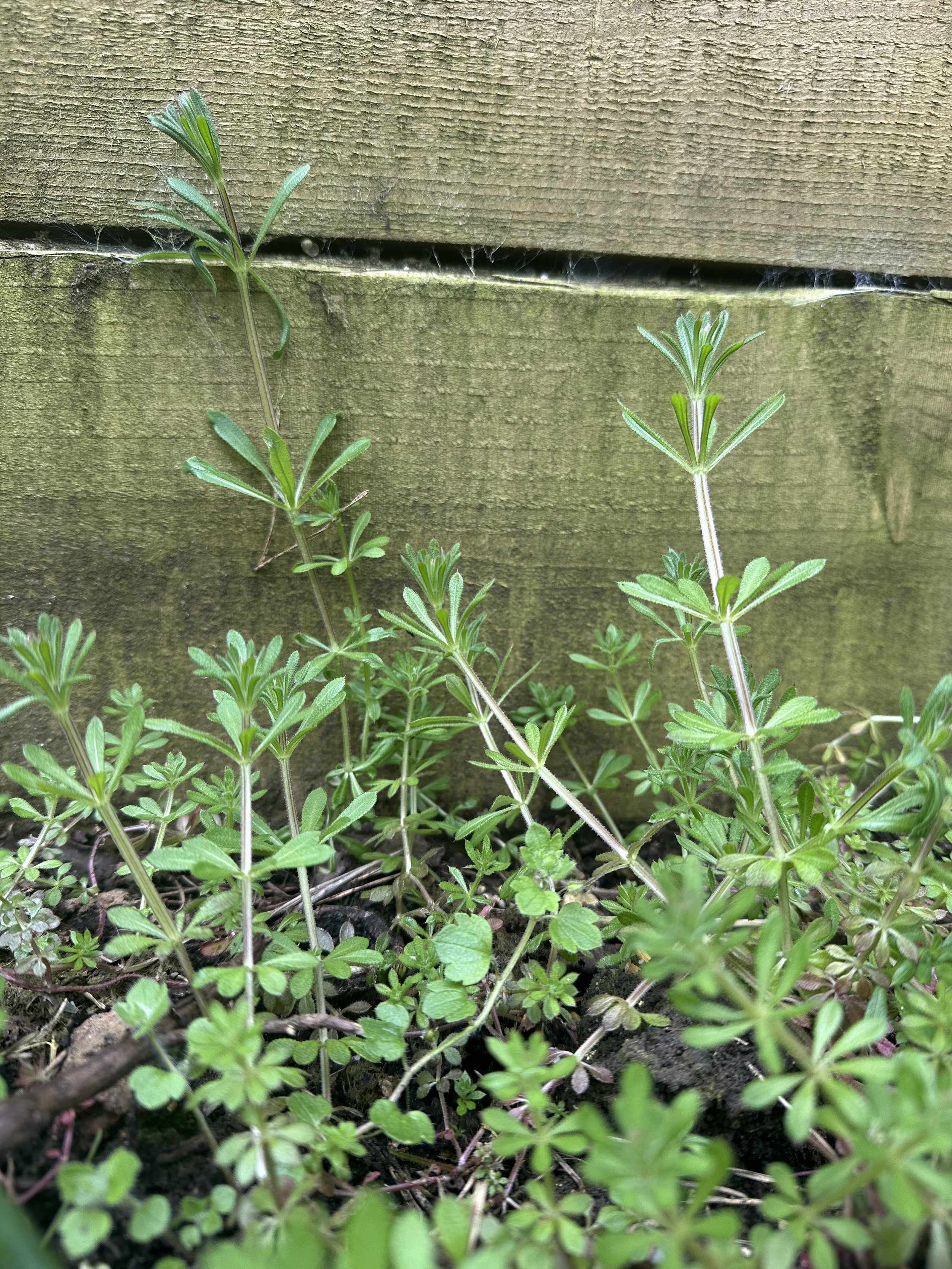
Cleavers
Cleavers (Galium aparine)
Cleavers (Galium aparine) is the classic spring lymph mover, cool, light, and gently cleansing. Known as “sticky weed,” it helps decongest puffy, sluggish tissues and soothes hot, irritated skin from within. Traditionally used for swollen glands and urinary support, it’s lovely fresh as a tea or juice, and pairs well with chickweed or calendula in cooling blends.
Plant family
Rubiaceae (Coffee family)
Parts used
Aerial parts
Typical forms of prescription
Infusions
Tinctures
Dosage
Tincture (1:2): 30–50 ml per week
Dried herb: 6–12 g per day.
Cleavers (Galium aparine) - Clinical Snapshot
Primary Actions
Lymphatic
Diuretic
Astringent
Depurative
Mild laxative
Anti-inflammatory
Alterative
Vulnerary
Primary Indications
Chronic skin conditions
Constipation
Inflammation of the gastrointestinal tract
Cystitis
Prostatitis
Swollen glands
Tonsillitis
Wound healing
⚠️ Cautions / Safety⚠️
Some reports of dermatitis from contact with the plant’s tiny hooks.
Galium aparine
Phytochemistry and Pharmacology
-
Action: Antioxidant, anti-inflammatory, capillary-protective.
Use: Flavonoids support blood vessel integrity and help modulate inflammation. In Cleavers, they work synergistically with iridoids to calm the skin and clear the lymphatic system.
-
Action: Anti-inflammatory, lymphatic, mild diuretic, detoxifying.
Use: Iridoids, such as asperuloside, help support lymphatic drainage, reduce tissue inflammation, and encourage gentle detoxification. They contribute to Cleavers’ reputation as a key herb for swollen glands, skin eruptions, and urinary sluggishness.
-
Action: Astringent, toning, anti-inflammatory.
Use: These compounds help tone tissues, reduce excessive secretions, and contribute to Cleavers’ use in skin conditions and minor wounds. They also support the urinary tract by tightening irritated mucous membranes.
Traditional use
Cleavers have been used for centuries in folk medicine and rural life. Traditionally applied as poultices for burns, wounds, and skin irritation, they were also fed to poultry to encourage weight gain. The plant’s tiny seeds, botanically related to coffee, were once roasted and brewed as a coffee substitute. Its sticky stems made it a practical tool for straining milk, reflected in its Latin name Galium, derived from the Greek gala (milk). In spring, cleavers were commonly taken as a tonic, steeped in cold infusions for nine days or nine weeks to “cleanse the blood” and refresh the system after winter.
Description
Cleavers (Galium aparine) is a key lymphatic herb, often paired with Calendula officinalis to stimulate lymph flow, reduce swollen lymph nodes, and clear chronic skin conditions such as acne, eczema, and psoriasis. By supporting lymphatic drainage, cleavers helps the body process waste products, inflammatory debris, and pathogens, especially around the digestive tract, where a large portion of the immune system resides.
Its gentle diuretic action makes it useful in urinary tract infections and fluid retention, while its high silica content contributes to tissue repair, especially when used as a fresh poultice for wounds, burns, or slow-healing skin.
Cooling, cleansing, and mildly toning, cleavers is well-suited for those with skin eruptions, sluggish lymph, or systemic inflammation. It can be taken fresh in cold infusion, added to green juices, or tinctured.
Cultivation/Harvesting
Cleavers is a fast-growing annual that thrives in shady hedgerows, damp gardens, and disturbed ground. It grows prolifically in late winter and early spring, often forming mats of bright green, sticky stems.
Harvest the top two-thirds of the plant before it flowers or goes to seed, ideally in early spring. Use fresh for best results, as drying diminishes its potency. Allow the lower portion to regrow for a second harvest.
Key Botanical Features of Cleavers (Galium aparine)
Growth
Type: Annual, scrambling or climbing herb.
Size: 30–150 cm (1–5 feet) long, weak-stemmed.
Stem: Slender, square-shaped, covered in tiny, hooked hairs, helping it cling to surfaces.
Leaves
Type: Whorled, with 6–8 leaves per node.
Shape: Narrow, lanceolate (spear-shaped).
Size: 1–7 cm (0.4–2.8 inches) long.
Texture: Covered in fine, backwards-facing hooked hairs, making it sticky to the touch.
Flowers
Type: Small, star-shaped, clustered in loose groups.
Colour: White to pale green.
Size: About 2 mm (0.08 inches) in diameter.
Blooming Period: Late spring to summer.
Pollination: Insect-pollinated (bees, flies).
Fruits & Seeds
Fruit Type: Small, dry, round schizocarp, splitting into two seeds.
Size: 1–5 mm (0.04–0.2 inches) in diameter.
Surface: Covered in hooked bristles, aiding in animal dispersal.
Roots
Type: Shallow, fibrous root system.
Function: Helps the plant spread quickly in disturbed soils.
Habitat & Growth Conditions
Climate: Temperate and subtropical regions.
Soil: Prefers moist, nutrient-rich, well-drained soil.
Sunlight: Thrives in partial shade to full sun.
Distribution: Native to Europe, Asia, and North America, commonly found in hedgerows, fields, and waste areas.
Sustainability/Conservation:
Abundant, common weed.





Sources
Bartram, T. (1998). Bartram’s encyclopedia of herbal medicine. Constable.
Fisher, C. (2018). Materia medica of western herbs (Rev. ed.). Aeon Books.
Hedley, C., & Shaw, N. (2020). A herbal book of making and taking. Aeon Books.
Hoffmann, D. (2003). Medical herbalism: The science and practice of herbal medicine. Healing Arts Press.
McIntyre, A. (2019). The complete herbal tutor (Revised & expanded ed.). Aeon Books.
Royal Botanic Gardens, Kew. (n.d.). Plants of the World Online. https://powo.science.kew.org/
Mills, S., & Bone, K. (2013). Principles and practice of phytotherapy: Modern herbal medicine (2nd ed.). Churchill Livingstone; Elsevier.
Barnes, J., Anderson, L. A., & Phillipson, J. D. (2013). Herbal medicines (3rd ed.). Pharmaceutical Press.
Benzie, I. F. F., & Wachtel-Galor, S. (Eds.). (2011). Herbal medicine: Biomolecular and clinical aspects (2nd ed.). CRC Press; Taylor & Francis.
Evans, W. C. (2009). Trease and Evans’ pharmacognosy (16th ed.). Elsevier.
Disclaimer: This page is for educational purposes only. Consult a qualified medical herbalist before using herbs, especially during pregnancy, when trying to conceive, while breastfeeding, for medical conditions, or with children.
Read the full disclaimer → Medical Disclaimer.


